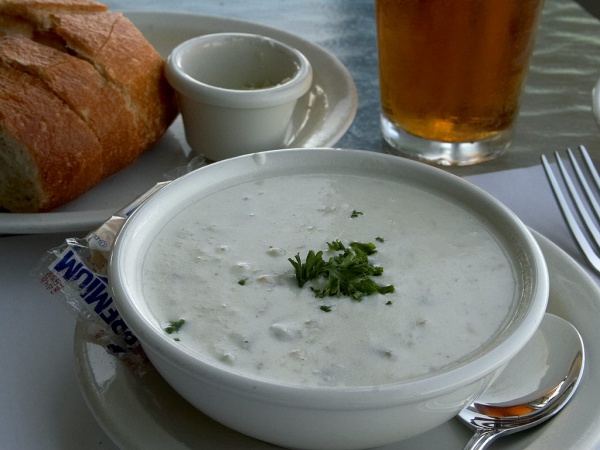Facts About Clam chowder
Clam chowder is a cherished element of American cuisine, celebrated for its hearty combination of clams, broth or milk, and an array of ingredients like diced potatoes, salt pork, onions, and celery. Typically, it is enjoyed with a side of saltine or oyster crackers, which add a pleasant crunch.
The origins of clam chowder can be traced back to the Eastern United States, where it gained particular popularity, especially on Fridays when Catholics traditionally abstained from meat. The ease of harvesting clams rendered them a natural choice for this comforting dish.
There are three primary regional varieties of clam chowder, each offering a distinct twist:
1. New England Clam Chowder: This is the most popular type, recognized for its creamy, milk-based broth. Introduced by early settlers, it has since become a classic comfort food.
2. Rhode Island Clam Chowder: Often referred to as "clear" clam chowder, this version omits milk or tomatoes, focusing instead on a clear broth that accentuates the flavor of the clams.
3. Manhattan Clam Chowder: This variation stands out with its tomato-based broth, imparting a distinctive red color and a tangy flavor.
In addition to these primary types, several other regional variations infuse their own unique elements:
- Delaware Clam Chowder
- Hatteras Clam Chowder
- Long Island Clam Chowder
- Minorcan Clam Chowder
Each variation incorporates a distinctive set of ingredients and preparation methods, showcasing the diverse culinary landscape of the United States.
Moreover, there are inventive ways to serve clam chowder, such as in sourdough bread bowls, which add an extra layer of flavor and texture. Similar dishes also exist, like Scottish cullen skink, fish chowder, and salmon chowder, particularly in Pacific Northwest cuisine.
Over time, clam chowder has evolved, with each region imparting its own character into this classic dish. The result is a rich tapestry of flavors and styles, making clam chowder a delicious and versatile component of American culinary tradition.

 Mexico
Mexico